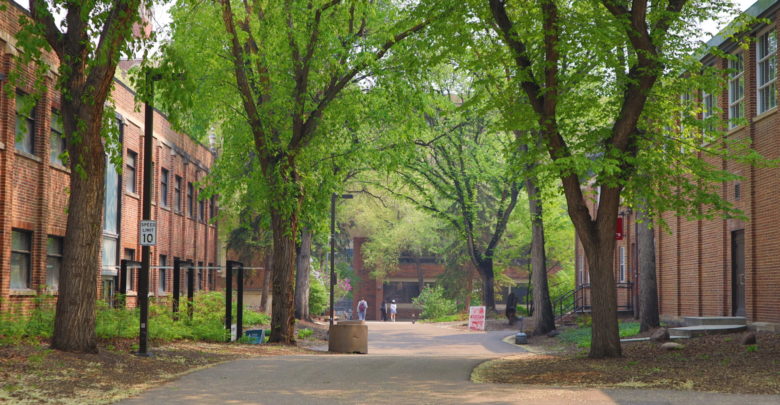 Lily Polenchuk
Lily PolenchukGraham Pearson, a professor in the department of earth and atmospheric sciences at the University of Alberta and Canada Excellence Research Chair (CERC) Laureate in Arctic Resources, is now an appointed fellow of the Royal Society of London.
Founded in 1660, the Royal Society is the United Kingdom’s (UK) national science academy. It is the world’s oldest national scientific institution with a fellowship of over 1,600 international scientists. Famous scientists in the fellowship include Charles Darwin and Issac Newton. There are 59 new fellows this year.
“It is a pinnacle achievement of anybody’s career to be elected to what’s essentially the equivalent of the National Academy of Sciences in the United States,” Pearson said.
He added that the collaboration of students, laboratory technical staff, and other supporters made this achievement possible.
Pearson is “one of the top isotope geochemists in the world”
Thomas Stachel, another professor in the department of earth and atmospheric sciences, nominated Pearson for a spot on CERC. As a result, Pearson came to the U of A in 2010.
In a statement provided to The Gateway, Stachel said he had to find someone who “combined basic and mineral resource research at the highest level … and someone who still had a great future ahead.” He added that Pearson was already “one of the top isotope geochemists in the world.”
The Royal Society offered Pearson a fellowship because of his contributions to the field of diamond geology. One of his contributions was the development of a new method of dating. Dating is the process of estimating the age of certain geological materials.
Previously, an average age would be determined by “taking the inclusions [from various diamonds] and pooling them all together for one analysis,” Pearson said. This development allowed researchers to see more detail in the ages of individual diamonds.
“It has become one of the standard go-to methods for getting ages on diamonds,” Pearson said.
When he first came to the U of A from the University of Durham in the UK, Pearson and his research group found ringwoodite. Ringwoodite is a mineral that forms in the Earth’s mantle. According to Pearson, the mineral became the first real evidence of a speculation made around 20 years ago — that there is a vast amount of water in crystallized structures under the earth’s crust.
“That crystal contained about one and a half weight per cent water. That doesn’t sound like a lot. But, if you extrapolated that water content throughout the earth, it’s two to three oceans worth of water locked in crystal structures at great depth,” Pearson explained.
This discovery showed that if water releases from the crystal, the crystal structures melt. If this occurs, it can do “dramatic” things to the earth in relation to volcanism and plate tectonics, Pearson said.
Pearson described the study of diamonds, saying that “there is nothing like having a real sample from vast depths in your hand that you can see and make physical and chemical tests on.”
In his statement, Stachel emphasized Pearson’s contributions to the department of earth and atmospheric sciences at the U of A.
“He has built an isotope lab that is unsurpassed worldwide, provides generous access to his facilities — especially to younger faculty, students and postdoctorals — and has raised the profile of our department on the international stage.”
Pearson aims to “find a better, more efficient, and more environmentally friendly way of exploiting resources”
Currently, Pearson is looking into superdeep diamonds, which may be younger than those found at higher levels. He wants to shift his research to critical mineral research. Additionally, he hopes to develop more deposits of minerals, and then implement their use in green energy production.
Additionally, Pearson said that he aims to “find a better, more efficient, and more environmentally friendly way of exploiting resources.”
Pearson is also the director of the Diamond Exploration Research Training School, funded by the National Science and Engineering Research Council of Canada. The program trains graduate students and gives them transferable skills to operate effectively in the resource exploration industry.
Through this program, graduate students get a chance to experience the industry while companies look at potential hires. Pearson added that all students that graduate from the program looking for a job in the industry, find one.
Stachel described Pearson as an “incredible boon” to the earth and atmospheric sciences department.
“The great honour of being appointed a fellow of the Royal Society is well deserved for such an outstanding researcher. The moment crowns the many important international awards that Pearson has collected over the past few years. But, it certainly will not be the end.”




